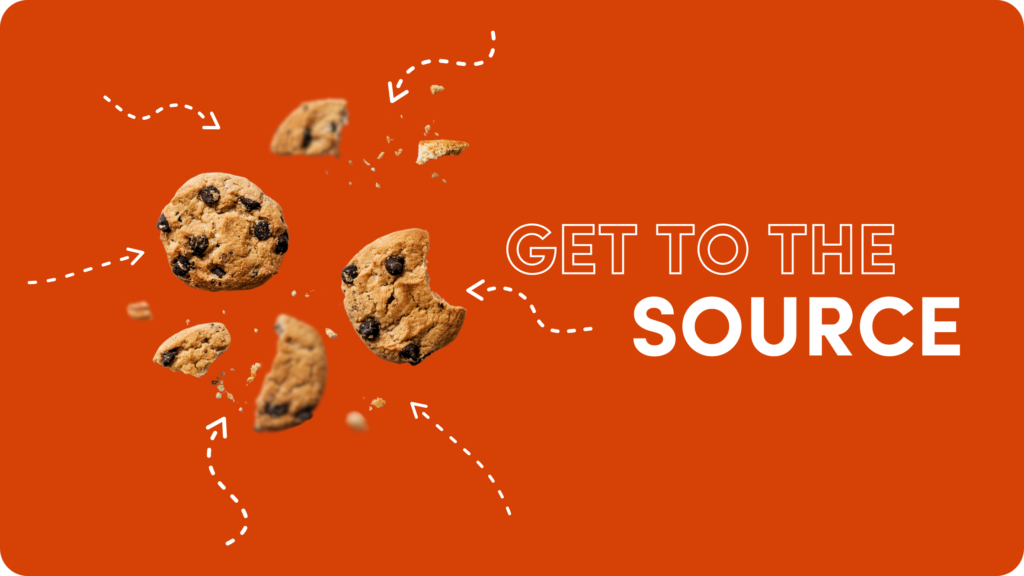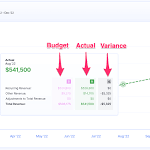The digital marketing landscape is undergoing a transformative shift. As privacy regulations tighten and third-party cookies fade into the background, marketers must now adapt to a new era—one that demands more sophisticated tracking methods and attribution models. Enter the cookieless tracking solution, a strategy designed to navigate this evolving terrain while ensuring that data remains both actionable and privacy-compliant. In this blog, we’ll delve into the nuances of cookieless tracking, compare first click versus last click attribution, and explore the advanced marketing tools that are shaping the future of digital analytics.
The Changing Landscape of Digital Marketing
For years, third-party cookies have been the backbone of online tracking. They allowed advertisers to monitor user behavior across multiple sites, creating detailed profiles that enabled highly targeted campaigns. However, rising concerns over data privacy and new regulations such as the General Data Protection Regulation (GDPR) and the California Consumer Privacy Act (CCPA) have drastically altered the digital advertising landscape. Major browsers are phasing out third-party cookies, compelling marketers to rethink how they track user engagement and measure campaign success.
In response to this shift, a new approach—cookieless tracking—has emerged. This method relies on first-party data and alternative tracking technologies that respect user privacy. A cookieless tracking solution leverages contextual signals, server-side tracking, and user consent to build a more privacy-centric model of data collection. While these methods may not yet offer the granular detail of traditional cookies, they provide a sustainable framework for understanding customer journeys in a privacy-first world.
The transition to cookieless tracking is not just a technological shift; it’s a fundamental change in how marketers approach data collection and campaign measurement. Embracing these new methodologies is essential for maintaining competitive advantage. With the right strategies, brands can continue to gather meaningful insights while adhering to evolving privacy standards.
Attribution in a Cookieless World: First Click vs. Last Click
Understanding Attribution Models
Attribution models are essential in digital marketing because they determine how credit is assigned to various touchpoints along the customer journey. As the industry moves away from cookie-dependent data, understanding which model best suits your needs becomes increasingly critical.
First Click Attribution: Capturing the Initial Spark
Definition:
First click attribution assigns all conversion credit to the first interaction a user has with a brand. This model focuses on the initial touchpoint, emphasizing the channel or campaign that initially introduced the customer to the brand.
Advantages:
- Focus on Discovery: First click attribution is excellent for measuring brand awareness campaigns. By identifying which channel made the first impression, marketers can determine the effectiveness of their initial outreach efforts.
- Long-Term Relationship Building: It highlights the channels that are crucial in the early stages of the customer journey, helping brands understand how to spark interest and begin nurturing relationships.
- Strategic Insights: Marketers can better allocate budgets toward channels that create the first point of contact, ensuring that resources are invested where they generate initial interest.
Limitations:
- Incomplete Journey Representation: By solely focusing on the first touchpoint, this model may ignore the impact of subsequent interactions that ultimately drive conversions.
- Potential Overvaluation: In campaigns with multiple touchpoints, relying on first click attribution can overstate the importance of the initial interaction, leaving out critical insights from later engagements.
Last Click Attribution: Celebrating the Conversion Moment
Definition:
Last click attribution gives all the credit for a conversion to the final touchpoint before a user completes the desired action. This method is widely used due to its simplicity and the clear correlation it provides between the last interaction and the final conversion.
Advantages:
- Direct Conversion Link: It provides a straightforward view of which touchpoints are most effective in driving immediate conversions. Marketers can easily see which final interactions lead directly to sales or leads.
- Ease of Implementation: The model’s simplicity makes it easy to understand and implement, particularly for small-scale campaigns or those with limited data integration capabilities.
- Budget Justification: For campaigns focused on immediate results, last click attribution offers clear metrics for justifying advertising spend based on direct performance outcomes.
Limitations:
- Neglecting the Full Journey: This approach tends to ignore earlier touchpoints that may have significantly contributed to the conversion process. Such oversight can lead to underinvestment in channels that play a crucial role in nurturing leads.
- Oversimplification: In complex customer journeys that involve multiple interactions across various platforms, last click attribution may oversimplify the contribution of each touchpoint, potentially skewing strategic decisions.
The Need for a Multi-Touch Attribution Approach
Given the limitations of both first click and last click attribution models, many digital marketers are turning to multi-touch attribution. This approach assigns proportional credit to all interactions throughout the customer journey, offering a more balanced view of how various touchpoints contribute to conversions. Multi-touch attribution models can be customized to reflect the unique dynamics of a particular campaign, ensuring that every interaction—from initial awareness to final conversion—is considered.
Benefits of Multi-Touch Attribution:
- Holistic View: By recognizing the contributions of every touchpoint, multi-touch models provide a comprehensive picture of the customer journey.
- Enhanced Optimization: With detailed insights into how each interaction influences conversions, marketers can optimize their campaigns more effectively, reallocating budgets to channels that truly drive results.
- Strategic Agility: These models offer the flexibility to adapt to different campaign types, whether they are focused on brand awareness, lead generation, or direct sales.
Advanced Marketing Tools in a Cookieless World
Evolving Analytics Platforms
In the cookieless era, advanced analytics platforms are playing a pivotal role. Modern tools are designed to integrate first-party data with alternative tracking methodologies, providing deeper insights without compromising user privacy.
Key Features of Modern Analytics Platforms:
- Data Integration: These platforms seamlessly merge data from various sources, including CRM systems, social media analytics, and server-side tracking, to create a unified view of customer interactions.
- Custom Attribution Models: Advanced tools offer customizable attribution models, allowing marketers to choose between first click, last click, or multi-touch attribution based on their specific needs.
- Real-Time Reporting: With real-time analytics, brands can make quick adjustments to their campaigns, ensuring that strategies remain agile in a rapidly changing environment.
- Predictive Analytics: Leveraging machine learning, some platforms provide predictive insights, forecasting future trends based on current and historical data.
Tools for UTM Parameter Management
UTM parameters remain a vital tool for tracking the performance of individual marketing campaigns. In a cookieless world, the strategic use of UTM parameters becomes even more critical. They provide a clear trail of how users engage with content, helping to bridge the data gap left by the decline of third-party cookies.
Best Practices for UTM Parameters:
- Standardization: Ensure consistency in naming conventions to avoid data fragmentation. Standardized UTM parameters allow for easier aggregation and analysis.
- Detailed Documentation: Clearly define each parameter and its intended use. This clarity not only improves data quality but also makes it easier for team members to interpret reports.
- Integration with Analytics: Ensure that your analytics platforms are configured to capture and analyze UTM data. This integration is key to understanding how various campaigns perform.
- Regular Audits: Periodically review UTM usage to identify any discrepancies or areas for improvement, ensuring that your tracking remains accurate and reliable.
Leveraging First, Second, and Third Party Data
While third-party cookies may be on the decline, data remains a cornerstone of effective marketing. Brands are now focusing on first-party data—information gathered directly from customers—as well as second-party data through partnerships and collaborations. Advanced tools are being developed to integrate these different data sources, providing a more complete picture of customer behavior.
Strategies for Data Integration:
- Consent-Driven Data Collection: Encourage customers to share their information through transparent opt-in processes. Building trust is essential for gathering reliable first-party data.
- Partnerships: Form strategic alliances with other brands to share second-party data. This collaboration can enhance your understanding of customer behaviors without relying on intrusive tracking methods.
- Data Enrichment: Use advanced analytics to combine first-party data with contextual insights, creating enriched profiles that offer deeper insights into customer preferences and behavior.
The Role of Artificial Intelligence
Artificial intelligence (AI) is revolutionizing how we approach digital marketing. In a cookieless world, AI-driven tools can help overcome the data limitations imposed by stricter privacy regulations. These tools analyze vast amounts of data to identify patterns and trends that may not be immediately apparent, providing actionable insights for campaign optimization.
Applications of AI in Attribution and Tracking:
- Predictive Modeling: AI can forecast which touchpoints are likely to drive future conversions, helping marketers allocate resources more effectively.
- Automated Attribution: Machine learning algorithms can dynamically adjust attribution models based on real-time data, ensuring that every touchpoint is accurately represented.
- Personalization: By analyzing behavioral data, AI can help deliver personalized marketing messages that resonate with individual users, enhancing overall campaign performance.
Best Practices for Navigating the Cookieless Future
Embrace a Multi-Channel Strategy
The transition to a cookieless world requires a multi-channel approach. Relying on a single tracking method or data source is no longer sufficient. Instead, marketers must integrate various channels—social media, email, search, and direct traffic—to form a cohesive understanding of customer behavior.
Invest in Robust Analytics
Modern analytics platforms are essential in this new landscape. Investing in tools that offer real-time insights, customizable attribution models, and AI-driven analytics can provide a significant competitive edge. These platforms help ensure that your marketing strategies are data-driven and responsive to changes in customer behavior.
Foster a Culture of Data Privacy
As data privacy becomes increasingly important, it’s crucial to build trust with your audience. Implement transparent data collection practices and ensure that your tracking methods comply with relevant privacy regulations. This approach not only protects your brand but also strengthens customer loyalty.
Continuously Educate Your Team
The digital marketing landscape is evolving rapidly. Regular training and workshops on new tools, technologies, and privacy regulations are essential to keep your team informed and agile. A well-informed team can adapt more quickly and implement effective strategies in this dynamic environment.
Monitor and Optimize
Regularly review your attribution models and tracking methods. Use A/B testing, data audits, and performance analytics to identify what’s working and what isn’t. Continuous optimization is key to staying ahead in a competitive market.
Future Trends in Cookieless Tracking and Attribution
Integration of Offline Data
One emerging trend is the integration of offline data with digital analytics. As the boundaries between online and offline behaviors blur, marketers are seeking ways to correlate in-store purchases, call center interactions, and other offline activities with digital campaigns. This integration provides a more holistic view of the customer journey, allowing brands to refine their strategies across multiple channels.
The Rise of Contextual Advertising
Contextual advertising is making a comeback as a viable alternative to cookie-based targeting. Instead of relying on user profiles, contextual ads are displayed based on the content of the page. This approach not only respects user privacy but also ensures that advertisements are relevant to the content being viewed, thereby enhancing the user experience.
Enhanced Customer Journey Mapping
With advancements in analytics, mapping the customer journey is becoming more sophisticated. Marketers can now leverage data from various touchpoints—email, social media, direct website visits—and combine it with contextual insights to create detailed customer profiles. This enhanced mapping helps in identifying key moments of engagement and optimizing the journey for better conversion rates.
Greater Emphasis on Data Security
Data breaches and privacy violations have underscored the need for robust security measures. In response, marketing tools are increasingly focusing on secure data handling and compliance with global privacy standards. As brands invest in secure tracking solutions, customer trust is likely to grow, reinforcing the importance of ethical data practices in digital marketing.
Conclusion
The era of cookieless tracking is here, and it presents both challenges and opportunities for digital marketers. As third-party cookies become a relic of the past, innovative solutions like the cookieless tracking solution are paving the way for a more privacy-centric approach to data collection and attribution. Whether you lean towards first click, last click, or a more nuanced multi-touch attribution model, the key is to remain agile and open to new technologies and methodologies.
By continuously monitoring and optimizing your attribution models and leveraging advanced marketing tools, you can maintain a competitive edge in a cookieless world. The journey may be complex, but with a clear strategy and the right tools, you can turn these challenges into opportunities for growth and innovation.
In summary, embracing a cookieless tracking solution and understanding the dynamics of first click versus last click attribution are crucial steps in modern digital marketing. With the right approach, you can not only survive but thrive in this new era, delivering impactful campaigns that resonate with your audience while respecting their privacy.



